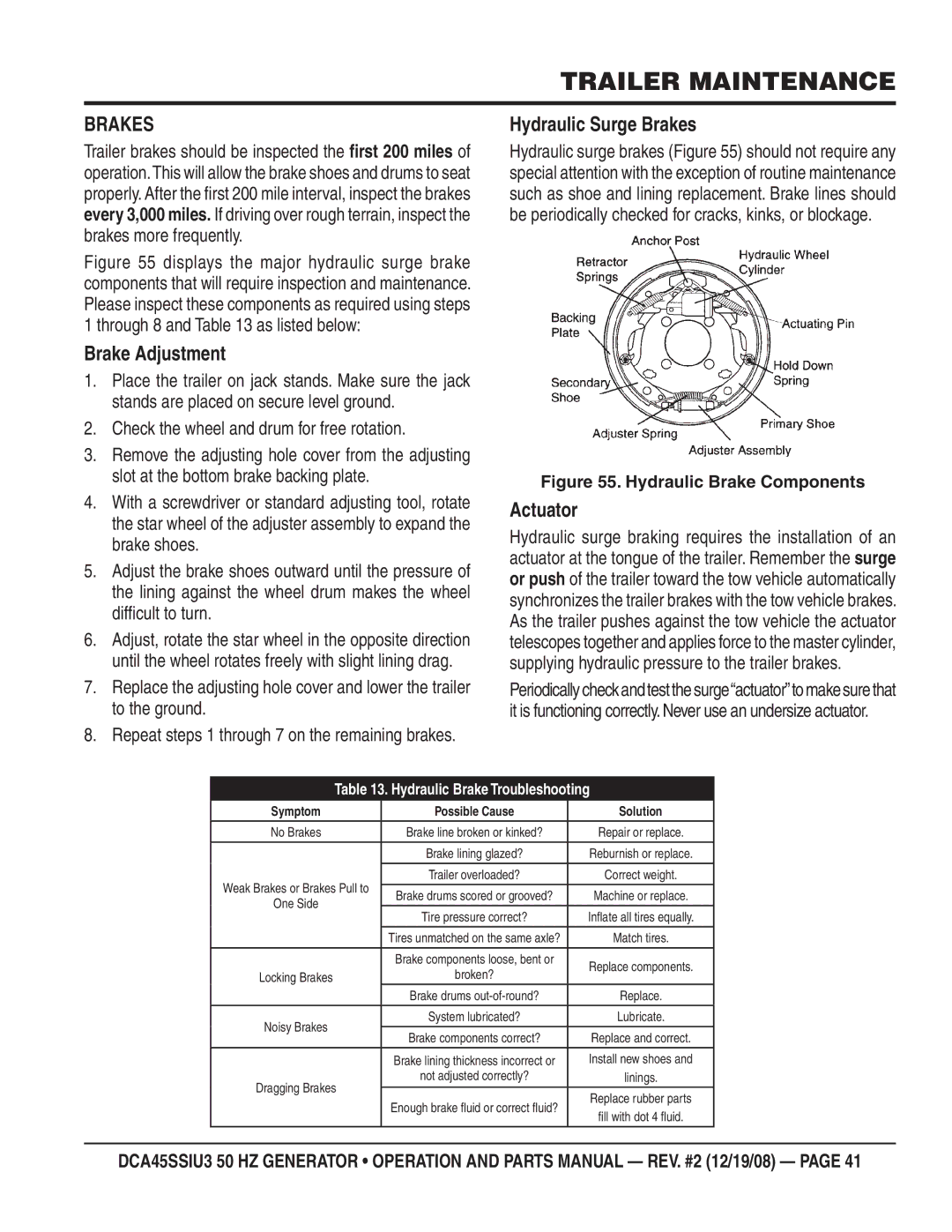CDA45SSIU3 specifications
The Multiquip CDA45SSIU3 is a versatile and powerful piece of equipment primarily designed for the construction and industrial sectors. As part of Multiquip's range of durable and reliable construction machinery, the CDA45SSIU3 is engineered to meet the demands of various tasks, including compacting soil, asphalt, and granular materials.One of the standout features of the CDA45SSIU3 is its robust, high-performance engine. Powered by a reliable and efficient fuel system, the machine ensures optimal performance even under the heaviest loads. This not only improves productivity but also reduces fuel consumption, resulting in significant cost savings for contractors and operators.
The CDA45SSIU3 is equipped with advanced vibration technology, which provides exceptional compaction capabilities. Its dual-pump system delivers consistent performance, enabling operators to achieve the desired density in various soil types. This feature enhances the efficiency of the compaction process, making it ideal for preparing foundations, roadways, and other critical infrastructure.
Another notable characteristic of the CDA45SSIU3 is its user-friendly design. The machine comes with an intuitive control panel that allows operators to easily manage its functions. This ease of use reduces the learning curve for new operators, allowing them to quickly become proficient and maximizing productivity on job sites.
Durability is a key consideration in the design of the CDA45SSIU3. Constructed with high-quality materials, it withstands the rigors of demanding environments. The heavy-duty frame and components ensure longevity and consistent performance over time while minimizing maintenance requirements.
Additionally, the CDA45SSIU3 is designed with mobility in mind. Its compact dimensions and lightweight structure make it easy to transport between job sites. This portability ensures that operators can efficiently transition from one project to another without unnecessary delays.
Safety features are also a priority with the CDA45SSIU3. Equipped with safeguards that prevent accidental operation and enhance operator safety, the machine provides peace of mind while in use.
In summary, the Multiquip CDA45SSIU3 stands out as a powerful, reliable, and efficient solution for compaction tasks in construction and industrial applications. Its advanced engine, vibration technology, user-friendly controls, durable construction, and safety features make it an excellent choice for professionals seeking high-performance equipment. With the CDA45SSIU3, users can expect enhanced productivity, reduced operating costs, and reliable performance in various conditions.

